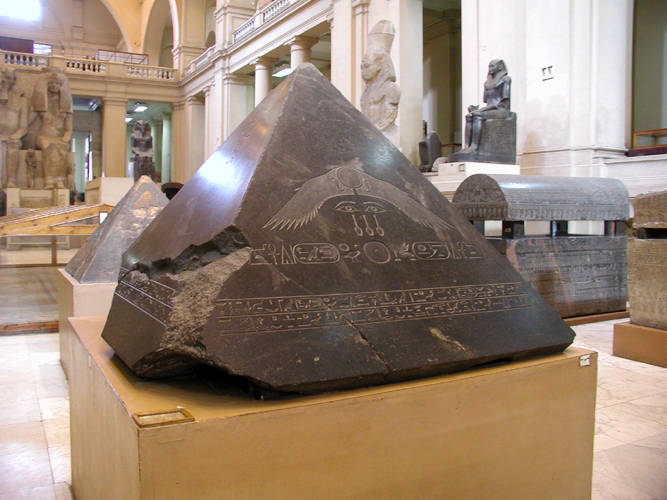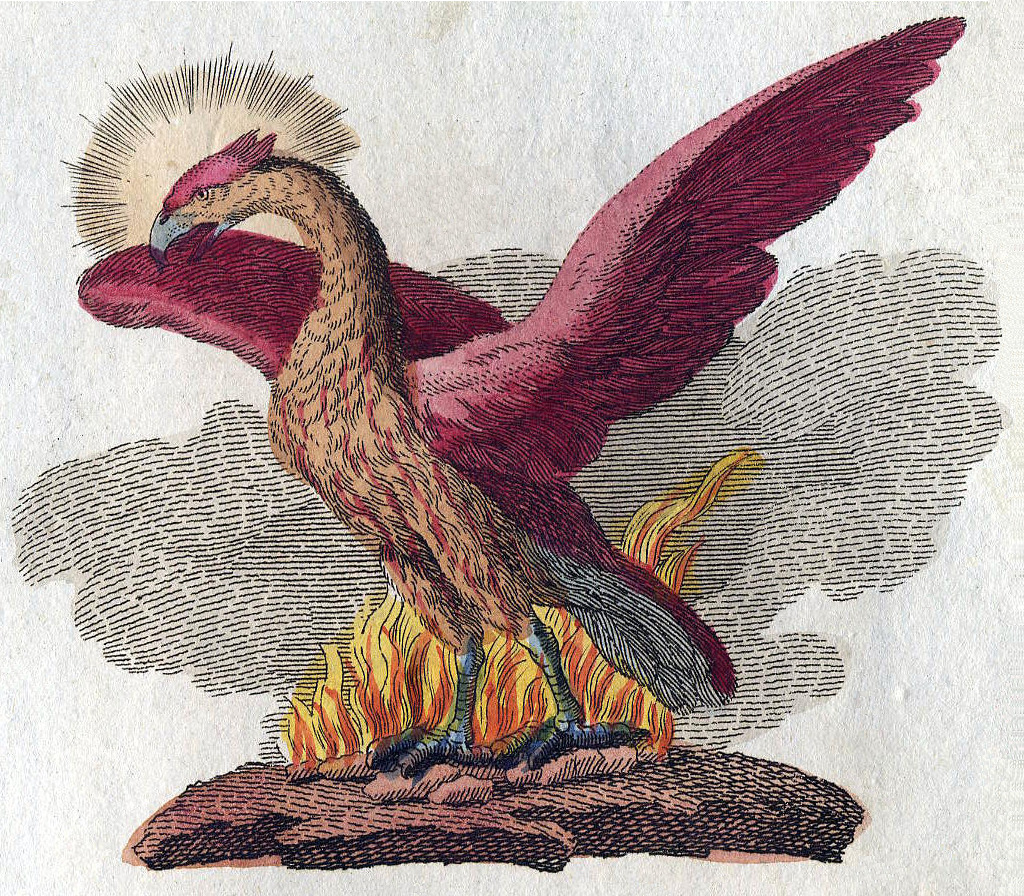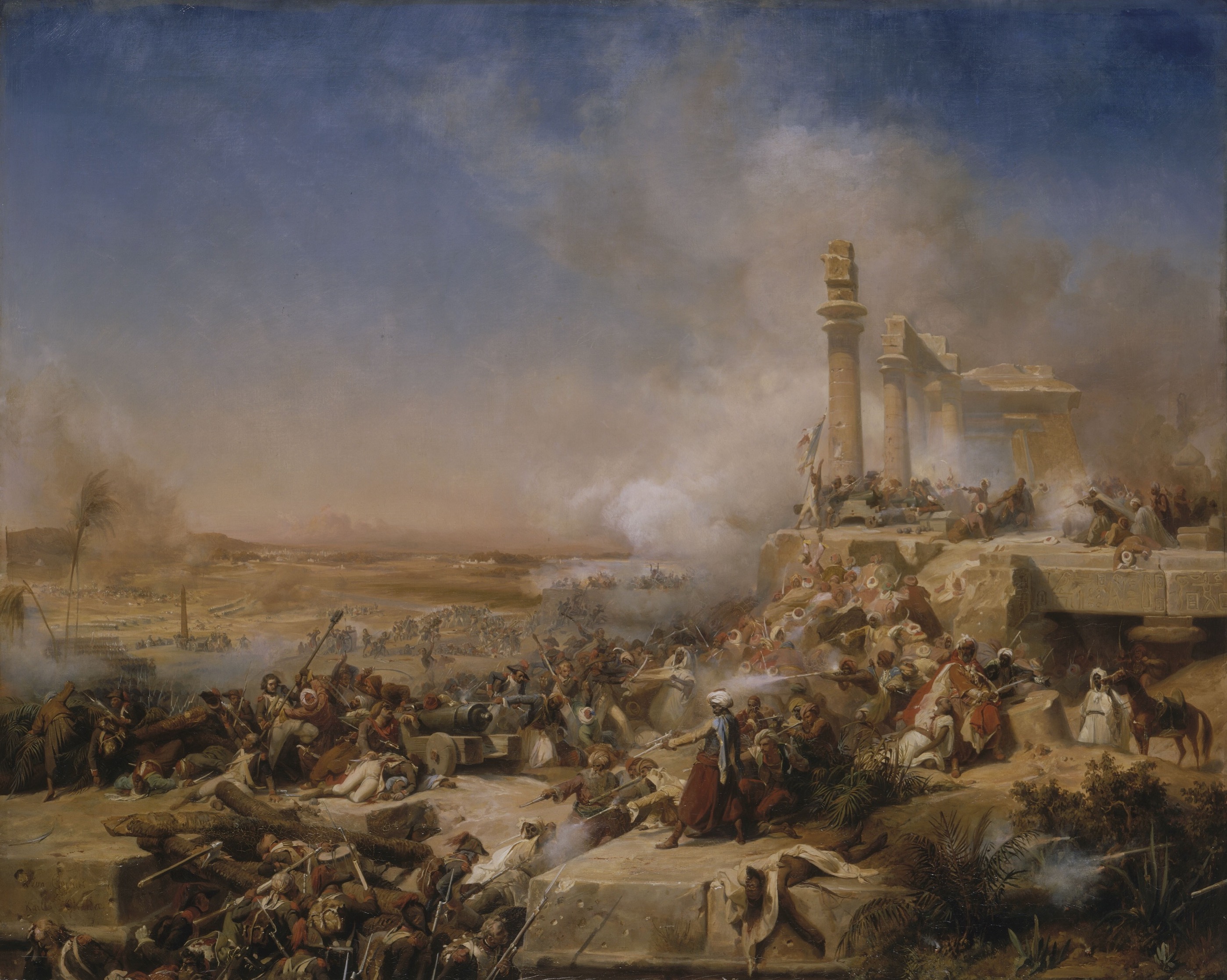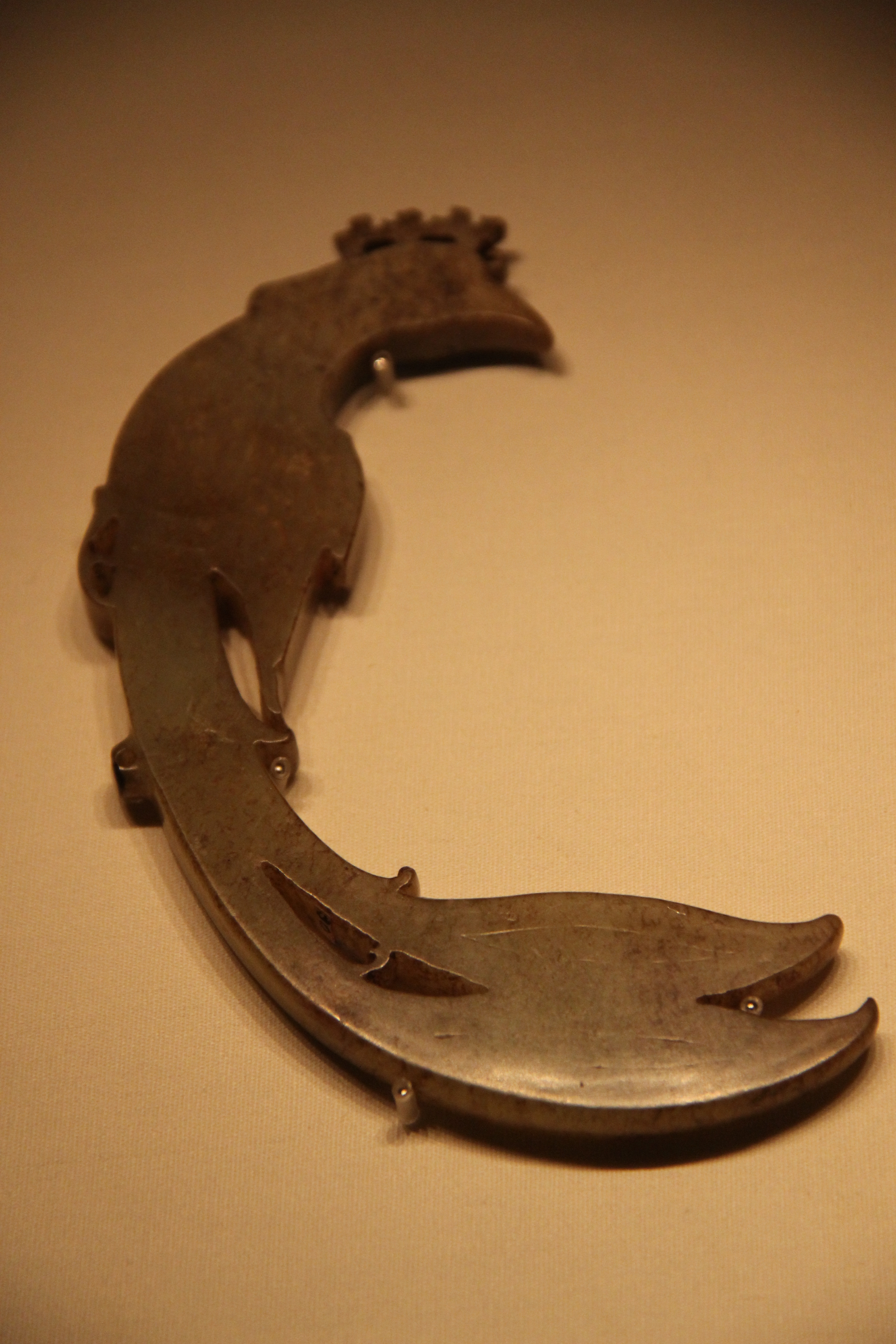|
Bennu
Bennu is an ancient Egyptian deity linked with the Sun, creation, and rebirth. He may have been the original inspiration for the phoenix legends that developed in Greek mythology. Roles According to Egyptian mythology, Bennu was a self-created being said to have played a role in the creation of the world. He was said to be the '' ba'' of Ra and to have enabled the creative actions of Atum. The deity was said to have flown over the waters of Nun that existed before creation, landing on a rock and issuing a call that determined the nature of creation. He also was a symbol of rebirth and, therefore, was associated with Osiris. Some of the titles of Bennu were "He Who Came Into Being by Himself", and "Lord of Jubilees"; the latter epithet referred to the belief that Bennu periodically renewed himself like the sun was thought to do. His name is related to the Egyptian verb ''wbn'', meaning "to rise in brilliance" or "to shine". Depiction The Pyramid Texts, which date to the ... [...More Info...] [...Related Items...] OR: [Wikipedia] [Google] [Baidu] |
Bennu Heron
The Bennu heron (''Ardea bennuides'') is an extinct, very large heron from what is now the United Arab Emirates at the eastern end of the Arabian Peninsula. Background Found in 1977, remains of the heron have been dated to 2700–1800 BCE, coinciding with the Umm al-Nar period. Based on remains discovered, it was approximately tall and had a wingspan up to , thus surpassing the size of the largest living species in the heron family, the goliath heron. It may have been the inspiration for the Bennu deity in Egyptian mythology, hence the specific name. Range It lived in what is now the United Arab Emirates at the eastern end of the Arabian Peninsula and in Egypt. Habitat It lived in wetlands. It most likely preyed upon fish and small- to medium-sized organisms. Despite its large size there is no evidence that it preyed upon human beings. Extinction It went extinct because of wetland A wetland is a distinct ecosystem that is flooded or saturated by water, either ... [...More Info...] [...Related Items...] OR: [Wikipedia] [Google] [Baidu] |
Benben
In the creation myth of the Heliopolitan form of ancient Egyptian religion, Benben was the mound that arose from the primordial waters Nu upon which the creator deity Atum settled. The Benben stone (also known as a pyramidion) is the top stone of the pyramid. It is also related to the obelisk. Primeval mound In the Pyramid Texts, e.g. Utterances 587 and 600, Atum himself is at times referred to as "mound". It was said to have turned into a small pyramid, located in Heliopolis (Egyptian: ''Annu'' or ''Iunu''), within which Atum was said to dwell. Other cities developed their own myths of the primeval mound. At Memphis, the god Tatenen, an earth god and the origin of "all things in the shape of food and viands, divine offers, all good things", was the personification of the primeval mound. Benben stone The Benben stone, named after the mound, was a sacred stone in the temple of Ra at Heliopolis (Egyptian: ''Annu'' or ''Iunu''). It was the location on which the first rays of the ... [...More Info...] [...Related Items...] OR: [Wikipedia] [Google] [Baidu] |
Heliopolis (ancient Egypt)
Heliopolis (I͗wnw, Iunu or 𓉺𓏌𓊖; egy, I͗wnw, 'the Pillars'; cop, ⲱⲛ; gr, Ἡλιούπολις, Hēlioúpοlis, City of the Sun) was a major city of ancient Egypt. It was the capital of the 13th or Heliopolite Nome of Lower Egypt and a major religious centre. It is now located in Ayn Shams, a northeastern suburb of Cairo. Heliopolis was one of the oldest cities of ancient Egypt, occupied since the Predynastic Period.. It greatly expanded under the Old and Middle Kingdoms but is today mostly destroyed, its temples and other buildings having been scavenged for the construction of medieval Cairo. Most information about the ancient city comes from surviving records. The major surviving remnant of Heliopolis is the obelisk of the Temple of Ra- Atum erected by Senusret I of Dynasty XII. It still stands in its original position, now within Al-Masalla in Al-Matariyyah, Cairo. The high red granite obelisk weighs 120 tons (240,000 lbs) and is believed to be ... [...More Info...] [...Related Items...] OR: [Wikipedia] [Google] [Baidu] |
Phoenix (mythology)
The phoenix is an immortal bird associated with Greek mythology (with analogs in many cultures) that cyclically regenerates or is otherwise born again. Associated with the sun, a phoenix obtains new life by rising from the ashes of its predecessor. Some legends say it dies in a show of flames and combustion, others that it simply dies and decomposes before being born again. In the ''Motif-Index of Folk-Literature'', a tool used by folklorists, the phoenix is classified as motif B32.Thompson. (2001: 581). The origin of the phoenix has been attributed to Ancient Egypt by Herodotus and later 19th-century scholars, but other scholars think the Egyptian texts may have been influenced by classical folklore. Over time the phoenix motif spread and gained a variety of new associations; Herodotus, Lucan, Pliny the Elder, Pope Clement I, Lactantius, Ovid, and Isidore of Seville are among those who have contributed to the retelling and transmission of the phoenix motif. Over time, extendin ... [...More Info...] [...Related Items...] OR: [Wikipedia] [Google] [Baidu] |
Heliopolis (Ancient Egypt)
Heliopolis (I͗wnw, Iunu or 𓉺𓏌𓊖; egy, I͗wnw, 'the Pillars'; cop, ⲱⲛ; gr, Ἡλιούπολις, Hēlioúpοlis, City of the Sun) was a major city of ancient Egypt. It was the capital of the 13th or Heliopolite Nome of Lower Egypt and a major religious centre. It is now located in Ayn Shams, a northeastern suburb of Cairo. Heliopolis was one of the oldest cities of ancient Egypt, occupied since the Predynastic Period.. It greatly expanded under the Old and Middle Kingdoms but is today mostly destroyed, its temples and other buildings having been scavenged for the construction of medieval Cairo. Most information about the ancient city comes from surviving records. The major surviving remnant of Heliopolis is the obelisk of the Temple of Ra- Atum erected by Senusret I of Dynasty XII. It still stands in its original position, now within Al-Masalla in Al-Matariyyah, Cairo. The high red granite obelisk weighs 120 tons (240,000 lbs) and is believed to be ... [...More Info...] [...Related Items...] OR: [Wikipedia] [Google] [Baidu] |
Grey Heron
The grey heron (''Ardea cinerea'') is a long-legged wading bird of the heron family, Ardeidae, native throughout temperate Europe and Asia and also parts of Africa. It is resident in much of its range, but some populations from the more northern parts migrate southwards in autumn. A bird of wetland areas, it can be seen around lakes, rivers, ponds, marshes and on the sea coast. It feeds mostly on aquatic creatures which it catches after standing stationary beside or in the water or stalking its prey through the shallows. Standing up to tall, adults weigh from . They have a white head and neck with a broad black stripe that extends from the eye to the black crest. The body and wings are grey above and the underparts are greyish-white, with some black on the flanks. The long, sharply pointed beak is pinkish-yellow and the legs are brown. The birds breed colonially in spring in "heronries", usually building their nests high in trees. A clutch of usually three to five bluish-green ... [...More Info...] [...Related Items...] OR: [Wikipedia] [Google] [Baidu] |
Firebird (Slavic Folklore)
In Slavic mythology and folklore, the Firebird (russian: жар-пти́ца, zhar-ptitsa; uk, жар-пти́ця, ''zhar-ptytsia''; sh-Latn-Cyrl, žar-ptica, жар-птица; bg, Жар-птица, Zhar-ptitsa; mk, Жар-птица, Žar-ptica; pl, Żar-ptak; cs, Pták Ohnivák; sk, Vták Ohnivák; sl, Rajska/zlata-ptica) is a magical and prophetic glowing or burning bird from a faraway land which is both a blessing and a harbinger of doom to its captor. Description The Firebird is described as a large bird with majestic plumage that glows brightly emitting red, orange, and yellow light, like a bonfire that is just past the turbulent flame. The feathers do not cease glowing if removed, and one feather can light a large room if not concealed. In later iconography, the form of the Firebird is usually that of a smallish fire-colored falcon, complete with a crest on its head and tail feathers with glowing "eyes". It is beautiful but dangerous, showing no sign of friend ... [...More Info...] [...Related Items...] OR: [Wikipedia] [Google] [Baidu] |
Fenghuang
''Fènghuáng'' (, ) are mythological birds found in Sinospheric mythology that reign over all other birds. The males were originally called ''fèng'' and the females ''huáng'', but such a distinction of gender is often no longer made and they are blurred into a single feminine entity so that the bird can be paired with the Chinese dragon, which is traditionally deemed male. It is known under similar names in various other languages ( Japanese: ; vi, phượng hoàng, italics=no or ; Korean: ). In the Western world, it is commonly called the Chinese phoenix or simply phoenix, although mythological similarities with the Western phoenix are superficial. Appearance A common depiction of fenghuang was of it attacking snakes with its talons and its wings spread. According to the '' Erya'''s chapter 17 ''Shiniao'', fenghuang is made up of the beak of a rooster, the face of a swallow, the forehead of a fowl, the neck of a snake, the breast of a goose, the back of a tortoise ... [...More Info...] [...Related Items...] OR: [Wikipedia] [Google] [Baidu] |
Copenhagen University
The University of Copenhagen ( da, Københavns Universitet, KU) is a prestigious public university, public research university in Copenhagen, Copenhagen, Denmark. Founded in 1479, the University of Copenhagen is the second-oldest university in Scandinavia after Uppsala University, and ranks as one of the top universities in the Nordic countries, Europe and the world. Its establishment sanctioned by Pope Sixtus IV, the University of Copenhagen was founded by Christian I of Denmark as a Catholic teaching institution with a predominantly Theology, theological focus. In 1537, it was re-established by King Christian III as part of the Lutheran Reformation. Up until the 18th century, the university was primarily concerned with educating clergymen. Through various reforms in the 18th and 19th century, the University of Copenhagen was transformed into a modern, Secularism, secular university, with science and the humanities replacing theology as the main subjects studied and taught. Th ... [...More Info...] [...Related Items...] OR: [Wikipedia] [Google] [Baidu] |
United Arab Emirates
The United Arab Emirates (UAE; ar, اَلْإِمَارَات الْعَرَبِيَة الْمُتَحِدَة ), or simply the Emirates ( ar, الِْإمَارَات ), is a country in Western Asia ( The Middle East). It is located at the eastern end of the Arabian Peninsula and shares borders with Oman and Saudi Arabia, while having maritime borders in the Persian Gulf with Qatar and Iran. Abu Dhabi is the nation's capital, while Dubai, the most populous city, is an international hub. The United Arab Emirates is an elective monarchy formed from a federation of seven emirates, consisting of Abu Dhabi (the capital), Ajman, Dubai, Fujairah, Ras Al Khaimah, Sharjah and Umm Al Quwain. Each emirate is governed by an emir and together the emirs form the Federal Supreme Council. The members of the Federal Supreme Council elect a president and vice president from among their members. In practice, the emir of Abu Dhabi serves as president while the ruler of Dub ... [...More Info...] [...Related Items...] OR: [Wikipedia] [Google] [Baidu] |
Myrrh
Myrrh (; from Semitic, but see '' § Etymology'') is a gum-resin extracted from a number of small, thorny tree species of the genus '' Commiphora''. Myrrh resin has been used throughout history as a perfume, incense and medicine. Myrrh mixed with posca or wine was common across ancient cultures, for general pleasure, and as an analgesic. Extraction and production When a wound on a tree penetrates through the bark and into the sapwood, the tree secretes a resin. Myrrh gum, like frankincense, is such a resin. Myrrh is harvested by repeatedly wounding the trees to bleed the gum, which is waxy and coagulates quickly. After the harvest, the gum becomes hard and glossy. The gum is yellowish and may be either clear or opaque. It darkens deeply as it ages, and white streaks emerge. Myrrh gum is commonly harvested from the species ''Commiphora myrrha''. Another commonly used name, ''Commiphora molmol'', is now considered a synonym of ''Commiphora myrrha''. ''Commiphora myrrha'' ... [...More Info...] [...Related Items...] OR: [Wikipedia] [Google] [Baidu] |
Herodotus
Herodotus ( ; grc, , }; BC) was an ancient Greek historian and geographer from the Greek city of Halicarnassus, part of the Persian Empire (now Bodrum, Turkey) and a later citizen of Thurii in modern Calabria ( Italy). He is known for having written the ''Histories'' – a detailed account of the Greco-Persian Wars. Herodotus was the first writer to perform systematic investigation of historical events. He is referred to as " The Father of History", a title conferred on him by the ancient Roman orator Cicero. The ''Histories'' primarily cover the lives of prominent kings and famous battles such as Marathon, Thermopylae, Artemisium, Salamis, Plataea, and Mycale. His work deviates from the main topics to provide a cultural, ethnographical, geographical, and historiographical background that forms an essential part of the narrative and provides readers with a wellspring of additional information. Herodotus has been criticized for his inclusion of "legends and fa ... [...More Info...] [...Related Items...] OR: [Wikipedia] [Google] [Baidu] |









.jpg)
